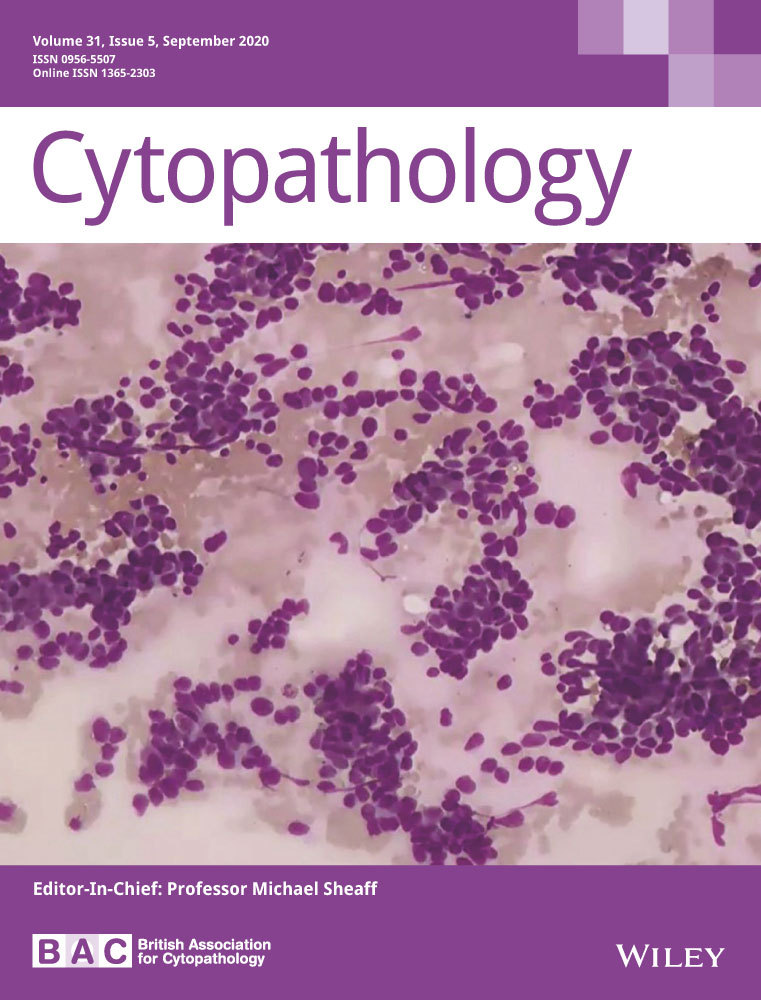Role of fractal dimension in distinguishing benign from malignant endometrial clusters in liquid-based cervical samples
Abstract
Introduction
Exfoliated endometrial cells are often seen as hyperchromatic crowded groups (HCGs) in cervical samples. It is challenging for the cytopathologists to discriminate between HCGs of benign and malignant endometrial cells. Fractal dimension (FD) analysis has proved to be a useful tool in discriminating between different types of cell groups in previous studies.
Aims
This study was conducted to evaluate the utility of FD for differentiating between benign and malignant endometrial HCGs, in liquid-based cervical samples.
Methods
Two groups of cervical samples, with subsequent histopathology, were selected: Group A: 30 cases with benign endometrial HCGs; and Group B: 39 cases with malignant endometrial HCGs. Image J, NIH and FracLac software were used for selecting and measuring the FD of the HCGs. Student t-test was used for statistical analysis.
Results
The mean FD for benign endometrial HCGs (1.066943 ± 0.0699) was significantly lower than that of the malignant endometrial HCGs (1.086271 ± 0.05121; P = .001). Using receiver operator characteristic curve analysis, we determined that an FD cut-off value of 1.01 would yield sensitivity of 90.3%, specificity of 26.1%, positive predictive value of 47.3% and negative predictive value of 78.6%.
Conclusion
The measurement of FD of HCGs in cervical samples can serve as a useful screening adjunct to differentiate malignant from benign HCGs, owing to its high sensitivity. However, in view of its low specificity and positive predictive value, we recommend that cases labelled as malignant by the FD value be confirmed for malignancy by other methods.
Abstract
This article describes the promising role of the fractal dimension in differentiating between benign and malignant hyperchromatic groups of cells in liquid-based cervical smear preparations.
6 CONFLICT OF INTEREST
There is no conflict of interest.
Open Research
DATA AVAILABILITY STATEMENT
The data are shared from the published data only with appropriate references.




